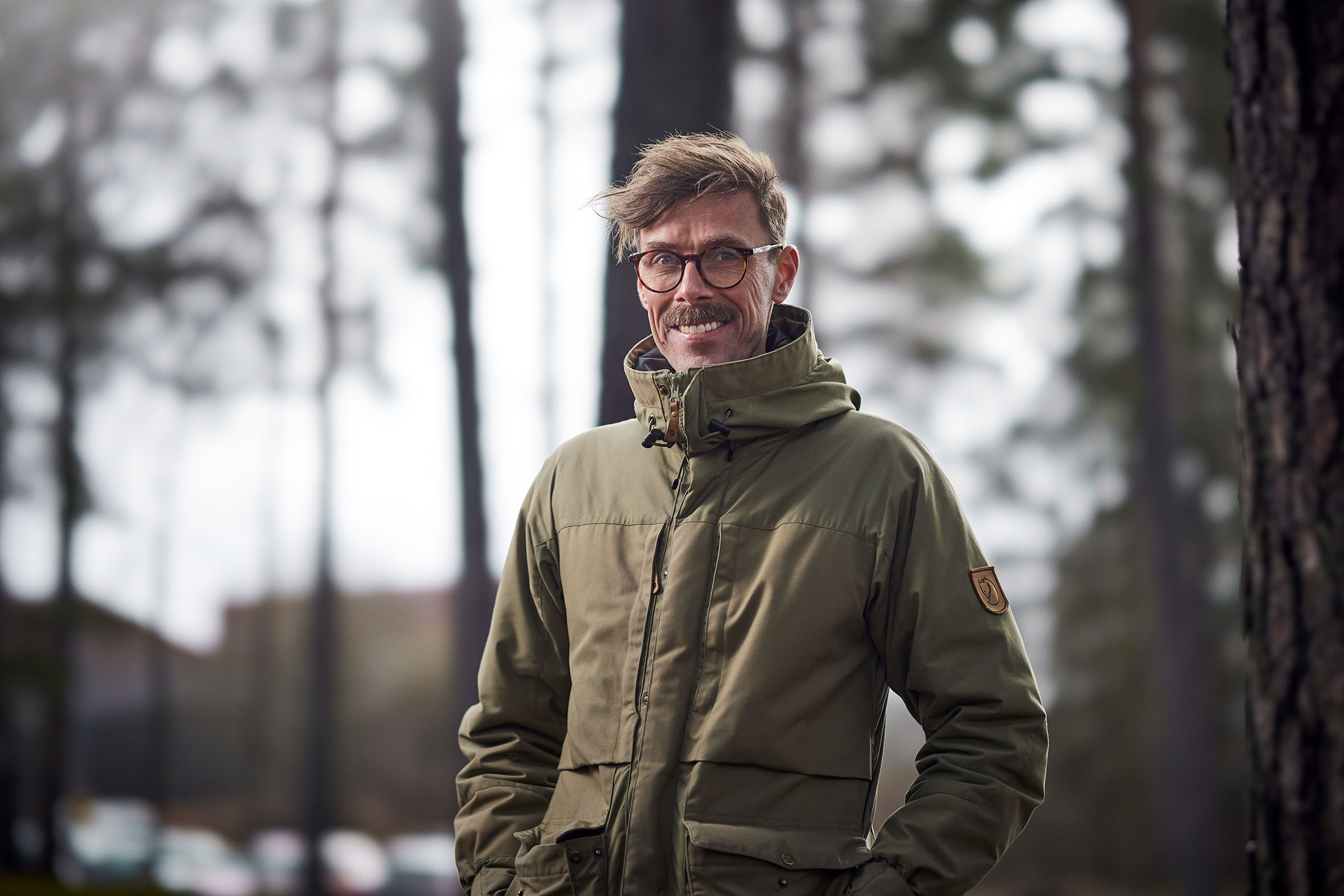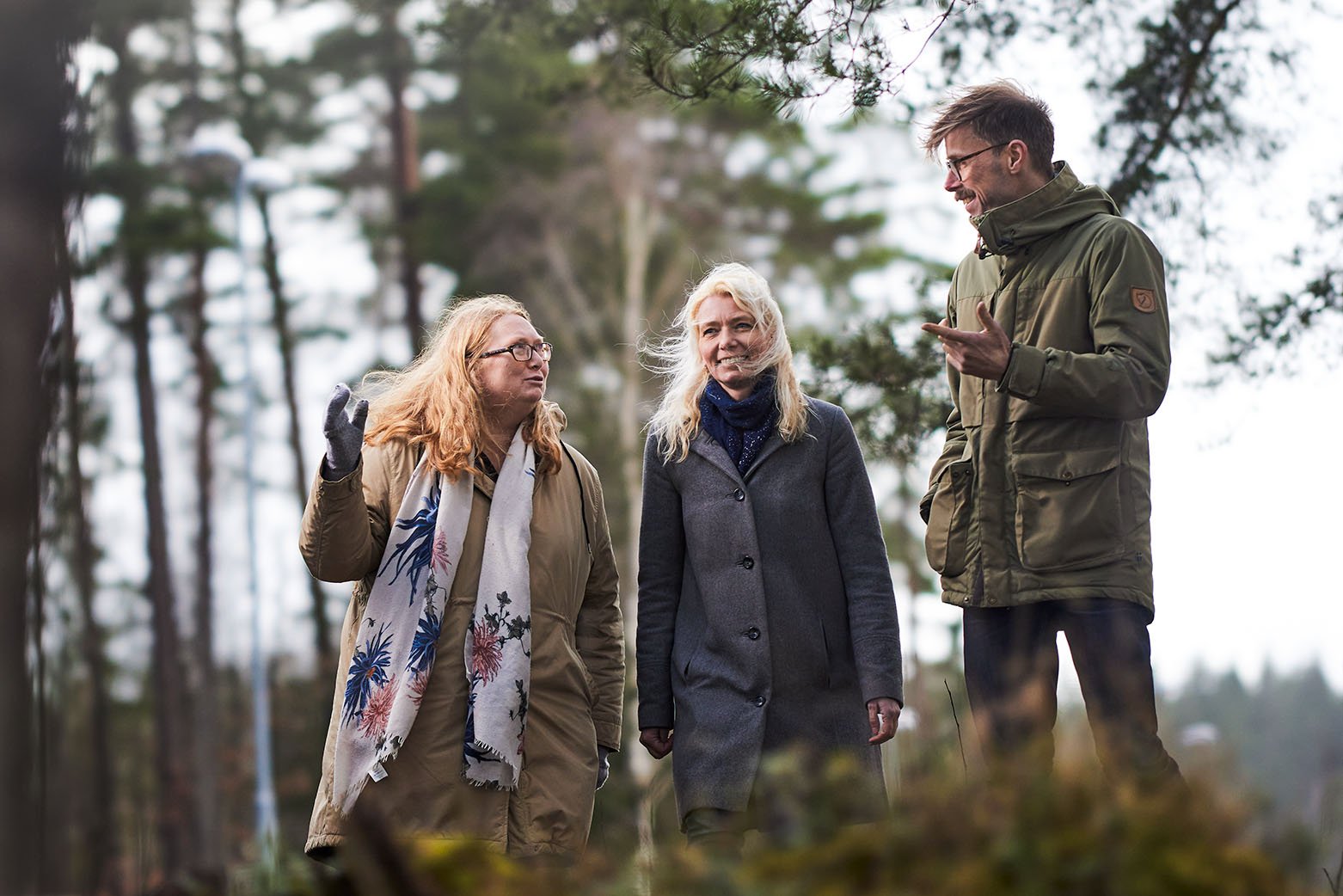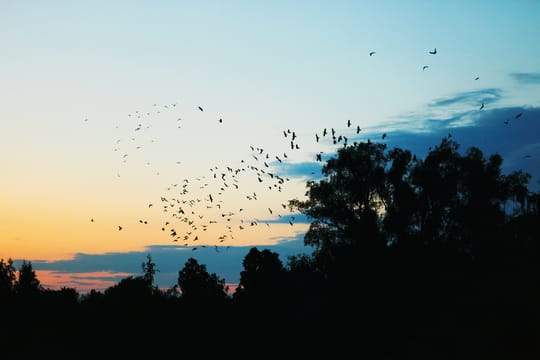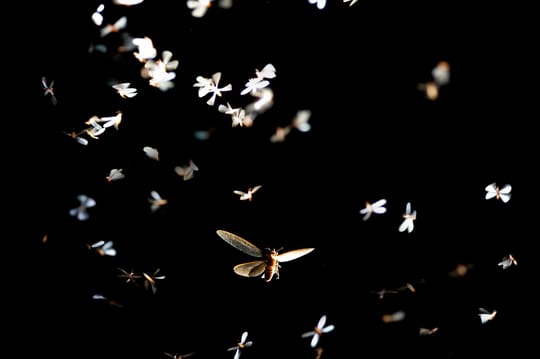
New technology and intelligent control pave the way for tomorrow's outdoor lighting
All electric light is produced by - and for - humans. Research is now focusing on some important questions: Is our lighting of outdoor environments at the expense of other species? And how can we create a safe environment in balance with the ecosystem and with minimal light pollution?
Outdoor lighting prolongs the day and is needed to provide a sense of safety and security, and to create attractive environments even when it is dark. However, light that is improperly directed, used at the wrong time of day, or lacks purpose can be considered light pollution. In addition, it is a waste of energy, and can negatively affect human well-being and animal habitats.
“We are in the midst of a rapid development, where biodiversity is threatened,” says Henrik Sandqvist, Product and Application Manager Outdoor Lighting, at Fagerhult. “This happens largely because of humans, and lighting is a contributing factor. Some animals are attracted to the light and others avoid it, which can create an imbalance in the ecosystem.”
 HENRIK SANDQVIST, PRODUCT AND APPLICATION MANAGER OUTDOOR LIGHTING AT FAGERHULT
HENRIK SANDQVIST, PRODUCT AND APPLICATION MANAGER OUTDOOR LIGHTING AT FAGERHULT
Today, however, there are limited standards stipulating which lighting should be used where and when. Bioinclusive Lighting involves providing light that is good for people’s well-being and urban development – with as little impact on biodiversity as possible.
“As a luminaire manufacturer, we are aware that we contribute to the increase in the amount of light. That is why we can also be part of the solution. We follow the research and guiding standards, and we listen to those who know more than we do. We want to stay ahead, and we always have Bioinclusive Lighting in mind in our product development. Our luminaire Evolume 1 has also been used in a joint study run by the University of Gävle and RISE, and we are happy to collaborate with others to find tomorrow’s solutions.”
A darker light environment
Around 80 percent of the world’s population cannot see a starry night sky. The reason is ‘skyglow’, which is caused by artificial light shining into the sky. The phenomenon is difficult to measure, but like other light pollution, it can have negative effects on humans, animals, and the environment.
“Just as we turn off the lights when we leave a room, outdoor lighting should also be turned off or dimmed when people are no longer in the vicinity. Here it becomes very clear that the right light, in the right place, and at the right time plays an important role.”
 – Akkurat som at vi slår av lyset når vi forlater et rom, bør vi også sørge for at utelysene slukkes eller dimmes når det ikke er mennesker i nærheten. Henrik Sandqvist
– Akkurat som at vi slår av lyset når vi forlater et rom, bør vi også sørge for at utelysene slukkes eller dimmes når det ikke er mennesker i nærheten. Henrik Sandqvist
Since lighting can affect species’ habitats, the ecosystem needs greater consideration in lighting design. When replacing or installing new lighting, it is important to ask: What is the purpose of the lighting? How does it affect the environment, people, animals and nature?
“Our basic idea is that all lighting must have a purpose, and the right character and strength. The amount of light must be commensurate, and it must only directed where it is needed. Since the nature of light is governed by its spectral distribution, we want to avoid light in the lower wavelengths. The general recommendation is therefore to use as warm a light as possible.
 ANNIKA JÄGERBRAND (UNIVERSITY OF GÄVLE), MARIA NILSSON TENGELIN (RISE) AND HENRIK SANDQVIST (FAGERHULT).
ANNIKA JÄGERBRAND (UNIVERSITY OF GÄVLE), MARIA NILSSON TENGELIN (RISE) AND HENRIK SANDQVIST (FAGERHULT).
Adaptive lighting can also adjust the light intensity and spectral distribution, and time control and presence control enable lighting precisely when needed.
“This is nothing new, and nothing we will solve today. But a good place to start is to use a lighting designer with good knowledge of outdoor lighting and who considers the whole when devising a solution. We will continue to focus on finding an inclusive approach to create light for people that is in balance with the ecosystem,” concludes Henrik Sandqvist.
Product in focus: Evolume
The Evolume luminaire series has good light comfort, and is now available with more options and colour temperatures: 2700K, 2200K and PC Amber as well as adaptive light. This allows the intensity, wavelength distribution, and light distribution to be adapted based on need, time, and presence, and with more consideration for animals and nature.
TEKST LINDA KARLSSON
FOTO PATRIK SVEDBERG, FABRIZIO MOGLIA

Our take on Bioinclusive Lighting
The right light, in the right place, at the right time. With Bioinclusive Lighting, we include the environmental aspects in planning outdoor lighting solutions and explore how we can minimise the impact on the ecosystem.
Les merRelaterte nyheter

Studier viser vei – hvordan blir dyr og mennesker påvirket av lysforurensning?
Det er en kompleks øvelse å måle hvilken effekt lys har på mennesker og dyr. For å kunne velge riktig belysning i fremtiden trengs det mer kunnskap, og beslutningstakerne trenger standarder å forholde seg til. Forskningsinstituttet RISE arbeider med å utarbeide målemetoder for å karakterisere de opplyste omgivelsene og på den måten danne grunnlag for fremtidige standarder. Dette inkluderer også å vurdere aksept av nye belysningsløsninger som er utviklet med håp om å redusere den økologiske påvirkningen. Mennesker og dyr påvirkes av lysforurensning, men det er ikke enkelt å vite hva som er riktig lys for hvert sted, eller hvilket lys mennesker og dyr trives best i. Det trengs mer kunnskap, slik at det blir enklere å ta velbegrunnede beslutninger i fremtiden. Maria Nilsson Tengelin er fysiker og forsker innen fotometri og radiometri ved RISE – Research Institutes of Sweden. Hun jobber blant annet med målinger av lys samt lysrelaterte forskningsprosjekter som danner grunnlaget for standarder og retningslinjer for utendørsbelysning. – Med mer kunnskap kan man ta mer gjennomtenkte beslutninger. Det finnes ingen løsninger som passer for alle situasjoner, men basert på forutsetningene som gjelder, kan man finne veien videre, sier Maria Nilsson Tengelin. Maria Nilsson Tengelin, fysiker og forsker ved RISE Grundige studier I prosjektet «Energieffektiv utomhusbelysning med minskade ljusföroreningar» arbeidet Maria Nilsson Tengelin sammen med Annika Jägerbrand fra høyskolen i Gävle og Alp Durmus fra Penn State University i USA. I prosjektet ble det bygd et testområde på en gang- og sykkelsti i et naturområde i utkanten av Borås i Sør-Sverige. I én uke ble de eksisterende lampene slukket, og det ble satt opp midlertidige stolper med armaturer fra Fagerhult. Armaturene hadde forskjellige korrelerte fargetemperaturer – nøytral hvit (3000 K), varmhvit (2200 K) og oransje (1800 K). Hver armatur hadde to forskjellige typer optikk – én som ga bred spredning av lys, samt én skjermet som ga mer lys på veien og nesten ikke lys i det hele tatt på sidene. Det gjorde det mulig å undersøke forskjellige fargetemperaturer og smal og bred spredning av lyset i forskjellige kombinasjoner. Installasjonen ble evaluert ved hjelp av tradisjonelle bakkebaserte lysmålinger samt med en nyutviklet metode der det brukes en drone for å måle hvordan lyset spres opp mot himmelen og lenger ut i omgivelsene. I undersøkelsen gikk 56 personer langs veien, og deretter fylte de ut en spørreundersøkelse om hvordan de opplevde lysmiljøet for de forskjellige belysningsinnstillingene. Bildet er fra Simrishamn, hvor Fagerhults utebelysning lyser opp byen. – Deltakerne fikk blant annet fortelle hvilken belysning de foretrakk, og om de var klare til å gjøre egne ofre hvis det er bra for miljøet. Målet med prosjektet var å finne ut hvordan man kan måle mengden lysforurensning på en pålitelig måte, og hvordan vi kan redusere de negative konsekvensene av utendørsbelysning, samtidig som lysmiljøet er godt nok for mennesker, sier Maria Nilsson Tengelin. Et stort flertall av deltakerne foretrakk det hvite lyset (2200 K og 3000 K), og en svært liten andel foretrakk det oransje lyset. På spørsmål om de kunne akseptere annen belysning på grunn av miljø eller energi, økte andelen som kunne tenke seg oransje belysning. – Eksperimentet i felt viste at 1800 K gir dårligere synlighet og opplevelse av trygghet og sikkerhet. Kvinner følte generelt at miljøet var mindre trygt. Men aksepten for oransje lys øker med bevisstheten om at man tar større hensyn til økologisk påvirkning. Quote Block - Maria En ny målemetodikk Neste samarbeidsprosjekt handler om å videreutvikle metodikken for målingene. Målet er å utvikle en ny metode for å vurdere og måle strølys i urbane, verneverdige miljøer og vassdrag. – Vi ser på hvilke punkter, med hvilke parametre og hvor mange målinger man må gjennomføre for at man skal kunne vurdere lysets miljøpåvirkning på en nøyaktig og pålitelig måte. Prosjektet handler også om å definere hva som skal inkluderes i en standard. I dag måles lyset med fokus på hvor godt det oppfyller funksjonen sin for mennesker – på veien og hvordan det reflekteres i ansiktet til møtende mennesker – og for at det ikke skal være blendende eller forstyrrende for mennesker i omgivelsene. Men strølys måles ikke i de geometrier og nivåer som kan være av betydning for dyr og planter. Grunnlaget for dagens standarder er basert på grenseverdiene for menneskers opplevelse, men de nye grenseverdiene må knyttes opp mot dyr og natur. – Det finnes mange som har veldig gode ambisjoner, men vi har fortsatt ikke tilstrekkelig grunnlag til å kunne fortelle hvordan de bør måle – ikke engang til å kunne si hva de bør forholde seg til. Det gjennomføres mange økologiske studier hvert år, men de er ofte ikke utformet på en slik måte at resultatene kan brukes til å planlegge belysningen. Med nye retningslinjer og en gjennomarbeidet standard får vi bedre forutsetninger, slik at vi forhåpentligvis kan utgjøre en stor forskjell, sier Maria Nilsson Tengelin. Dette er del to av tre i artikkelserien vår om Bioinclusive Lighting. Neste gang møter vi Henrik Sandqvist, som er produktsjef for utendørsbelysning hos Fagerhult. Han forteller hvordan vi tilpasser belysningsløsningene våre for å dekke behovene til både mennesker og dyr. Du finner forrige artikkel her. Annika Jägerbrand (Høyskolen i Gävle), Maria Nilsson Tengelin (RISE) and Henrik Sandqvist (Fagerhult).
Mer hensyn til økologi med mindre lys og smartere styring
Utendørsbelysning kan påvirke mennesker og dyr på forskjellige måter, og summen av de negative konsekvensene av kunstig lys defineres som lysforurensning. Annika Jägerbrand er dosent og universitetslektor ved høyskolen i Gävle i Sverige, og hun jobber for en tydeligere kobling mellom bruken av belysning utendørs og reduserte økologiske effekter. Mengden belyst areal har en tendens til å øke i både Europa og resten av verden, og i dag finnes det få steder som er helt upåvirket av elektrisk belysning og himmelglød. Annika Jägerbrand forsker blant annet på bærekraftig byutvikling samt lysforurensning og hvordan det påvirker arter og økosystemer ved høyskolen i Gävle nord for Stockholm. Hun er ledende innen området både i Sverige og internasjonalt, og hun jobber med standardisering for å gi beslutningstakerne retningslinjer for belysning i verneområder. Historien gjentar seg På starten av 1900-tallet var spørsmålet om stadig mer opplyste byer like relevant som i dag. Annika viser et avisutklipp fra forrige århundreskifte da Stockholm begynte å bli opplyst av elektriske gatelys. – Se her, de vil at det skal være «lyst som om dagen». Mange av disse ubevisste forestillingene gjennomsyrer tankegangen vår i dag også – 100 år senere. I dag har vi 150 000 lyskilder bare i Stockholm, og antallet øker hvert år. Når nye områder og veier bygges, så øker vanligvis det belyste arealet, noe som fører til at flere habitater og arter kan bli negativt påvirket av lysforurensning. En stor del av problemet er at det ikke finnes felles retningslinjer eller begrensninger for hva som er optimalt og riktig type lys for både mennesker og dyr. – Vi har for eksempel ingen standarder som hindrer lys over horisonten, bortsett fra for veibelysning, som er regulert til en viss grad. Det er merkelig. For det første er det en enorm sløsing med energi, og for det andre fører det til himmelglød og mye lysforurensning. Det er også synlig på satellittbilder. Internasjonalt finnes det generelle retningslinjer, men de brukes sjelden av beslutningstakere i Sverige. Quote block - Annika Spørsmålet om de økologiske konsekvensene av lysforurensning ble aktuelt på alvor i starten av 2000-tallet. Men de første studiene var ikke faktabaserte. De bygde mer på observasjoner. – Siden det ikke ble gjennomført målbare studier, blir det vanskelig å publisere og sammenligne resultatene. I dag finner man omfattende konsekvenser for og påvirkning på store grupper som insekter, fugler og flaggermus, men det er fortsatt ikke tilstrekkelig fokus på spørsmålet i belysningssammenheng om hvordan unngå påvirkning. For å komme videre i dette spørsmålet trenger man tydelige grenseverdier og en større forståelse for hvordan ulike arter påvirkes av elektrisk lys i mørket. – I de internasjonale diskusjonene flyttes fokuset ofte mot astronomisk lysforurensning i stedet for økologi. Men det er ikke helt samme type tiltak. Astronomene er opptatt av lyset som spres oppover, og på å bruke lavere fargetemperaturer. Innen økologi er det viktigere å ikke ha lys i det hele tatt, spesielt i følsomme miljøer, og å kombinere ulike tiltak for å redusere konsekvensene generelt. Der er vi ikke ennå. Styring med tredjepartsdata I dag finnes det teknologi som støtter redusert bruk av elektrisk lys, og med styring basert på tredjepartsdata kan man unngå økologisk følsomme perioder. Belysningen kan tilpasses etter klekkeperioder og når trekkfuglene er aktive, eller styres av temperaturen. Insekter er for eksempel ikke aktive hele tiden, og de er lite aktive når temperaturen er lavere enn ti grader. – I dag finnes det mye informasjon som kan brukes hvis man vil unngå å forstyrre bestemte grupper. All belysning er utviklet for oss mennesker, og vi må endre holdningene våre fra å forvente at utemiljøer alltid skal være maksimalt opplyste døgnet rundt, til å inngå kompromisser. Mange mennesker blir også forstyrret av lys som trenger inn på soverommet, så det kan være flere fordeler med en mer hensynsfull lysdesign. Men belysning er et spørsmål som berører mange. Innbyggerne ønsker ofte mer belysning og lysere utemiljøer, for eksempel rundt hus eller langs gang- og sykkelveier, mens økologer ønsker å beskytte truede arter og natur. – For økologer handler det om å tenke på hvordan habitater kan bevares naturlig mørke. Derfor trengs det mer forskning for å finne en god balanse og en mer hensynsfull belysning for dyr og natur, sier Annika Jägerbrand. Denne artikkelen er del én av tre i vår artikkelserie om «Bioinclusive Lighting» – belysning som møter menneskets behov for lys, i balanse med økosystemet. I neste artikkel møter vi forsker Maria Nilsson Tengelin fra RISE, som forteller om feltstudien Fagerhult var med på over temaet.